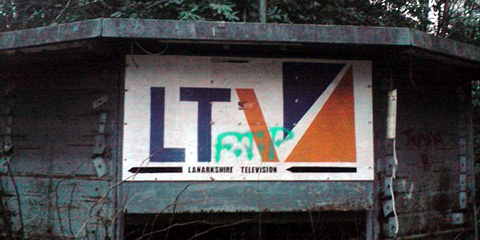Thursday 29 November, 2012, 04:07 - Licensed
The local TV landscape in the UK is slowly taking shape as the decision on the final, and arguably the most commercially viable/advantageous franchises is delayed to give Ofcom more time to make the right decision. Whilst decisions on which companies will succeed in the lucrative markets of London, Leeds and Liverpool are still outstanding, also still to be announced is who will supply the transmission services for the local TV stations. Four bidders emerged when Ofcom invited tenders to deliver the local TV multiplexes: Avanti Local TV (backed by broadband satellite company Avanti Communications – plans to use small transmitters to provide coverage tailored to local TV audiences)
Avanti Local TV (backed by broadband satellite company Avanti Communications – plans to use small transmitters to provide coverage tailored to local TV audiences) Comux UK (backed by Canis Media who run the local TV multiplex in Manchester – a group of consultants who will provide their expertise to local TV companies to help them get going)
Comux UK (backed by Canis Media who run the local TV multiplex in Manchester – a group of consultants who will provide their expertise to local TV companies to help them get going)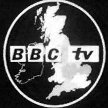 LMux Ltd (backed by the BBC – will shepherd the roll-out of the network in good old BBC style, and keep it going with any available funds until such time as those funds run out)
LMux Ltd (backed by the BBC – will shepherd the roll-out of the network in good old BBC style, and keep it going with any available funds until such time as those funds run out) Local TV Multiplex Ltd (backed by the Community Media Association – will act as a central procurement facility to try and negotiate down prices of transmitters and other services for local TV companies)
Local TV Multiplex Ltd (backed by the Community Media Association – will act as a central procurement facility to try and negotiate down prices of transmitters and other services for local TV companies)The majority of the bidders will rely on existing television transmitter sites to provide the coverage for the local TV multiplexes. This has a number of advantages, not least that viewers’ TV antennas will be pointing in the right direction and (hopefully) will be of the correct antenna group to receive the transmissions. Historically, however, placing local television transmitters on larger transmitter towers has not necessarily offered an ideal solution.
Lanarkshire TV (LTV, later rebranded as Thistle TV) used the main Black Hill transmitter site situated between Glasgow and Edinburgh, both of which it covers. The old analogue TV transmissions on Black Hill used a power of 500 kW whereas LTV only had around 10kW of power. At 500 kW coverage of the region is excellent, at 10 kW (50 times or 17 dB less), coverage is marginal at best. Even close to the mast where the lower power signal is notionally strong enough to provide good reception, viewers receivers will be set up to receive the stronger signals (ie antennas will be of lower gain, or even indoor) and the large disparity in signal strength will render the lower power station largely unwatchable.
A similar (but worse) situation occurred on the Isle of Wight where not only was the local TV station Solent TV (and its predecessor TV12) using only 2 kW compared to the power of the main station of 250 kW but it was also on an ‘out of group’ channel.
 The main transmitter at Rowridge uses channels at the lower end of the UHF TV band (channels 21 to 31 were used for analogue services), whereas Solent TV was on channel 54, meaning that not only was it 21 dB weaker leaving the transmitter due to its lower power (worse even than Lanarkshire TV) but the TV antennas of viewers (which are ‘grouped’ in order to focus their gain on the frequencies being used in the area) would add another 6 to 10 dB differential making the signals from Solent TV around 27-30 dB (500 to 1000 times) weaker than the main TV channels. The Solent TV transmitting aerials were also not as high up the mast as those of the main services, further reducing coverage. It is any wonder they went bust?
The main transmitter at Rowridge uses channels at the lower end of the UHF TV band (channels 21 to 31 were used for analogue services), whereas Solent TV was on channel 54, meaning that not only was it 21 dB weaker leaving the transmitter due to its lower power (worse even than Lanarkshire TV) but the TV antennas of viewers (which are ‘grouped’ in order to focus their gain on the frequencies being used in the area) would add another 6 to 10 dB differential making the signals from Solent TV around 27-30 dB (500 to 1000 times) weaker than the main TV channels. The Solent TV transmitting aerials were also not as high up the mast as those of the main services, further reducing coverage. It is any wonder they went bust?Arguably one of the more successful local TV stations (in terms of coverage) was Oxford TV (later known as Six TV).
 The station was transmitted from the Oxford transmitter site which is, you might have guessed, relatively close to Oxford itself. Though the power was lower, it was ‘in-group’ and though the picture was not as good as the main services, most people in Oxford (and the surrounding area) could watch the programmes relatively happily.
The station was transmitted from the Oxford transmitter site which is, you might have guessed, relatively close to Oxford itself. Though the power was lower, it was ‘in-group’ and though the picture was not as good as the main services, most people in Oxford (and the surrounding area) could watch the programmes relatively happily.Under Ofcom’s proposals, local TV is once again being planned from sites such as Black Hill, this time using digital terrestrial (DTT) multiplexes. One of the advantages of DTT is that the modulation and error correction can be varied in order to allow weaker signals to have coverage that is on a par with stronger ones, at the expense of the amount of data they carry. It is proposed that the local TV multiplexes will use QPSK and 2/3 rate FEC giving a capacity of around 8 Mbit/s, enough for 3 standard definition (SD) pictures. Current multiplexes (ignoring the DVB-T2 multiplex used for HD services) use 64QAM and either 2/3 or 3/4 FEC and provide up to 24 Mbit/s. The difference in signal strength needed to receive a QPSK signal compared to a 64 QAM signal is around 11dB, meaning that if the local TV transmitter power is 11 dB (about a factor of 12 times) or so less than the main station, coverage parity is maintained. This was not the case for analogue broadcasts of local TV, and makes the case for local TV using DTT much improved. It still requires sensible transmitter powers from stations to provide coverage and not the 20dB or less that the original analogue local TV stations enjoyed (if enjoyed is the right word).
There are, however, two distinct problems with using main stations for local TV:
- The main stations are often well outside the areas where the audiences are located (you wouldn’t put a 300 metre tall mast in the middle of a housing estate). The strongest coverage area of such towers is therefore outside of the area where the audience is located thus exacerbating the lower power, lower height, out of group issues that the old analogue local TV stations faced. Fundamentally they don’t put the signal where it is needed if all you’re interested in doing is serving a local community. You almost never see local radio stations on the same masts as the main national services for exactly this reason. Even in London, local (capital wide!) services were transmitted on FM from Crystal Palace whereas the national services were transmitted from Wrotham which is around 20 miles south east of London in the county of Kent. Only in relatively recent years (compared to the age of the FM network) did the BBC add the national stations to the Crystal Palace site as (guess what...) the coverage of Wrotham in central London was not ideal.
- Secondly, the main station masts are expensive to use both because higher power transmitters are needed to reach the desired service areas, but also because the masts themselves are expensive to operate and maintain and this has to be passed on to any organisations using the sites. Similarly, given their relatively remote location, power, access and other services can be difficult to provide increasing the cost of using the site.
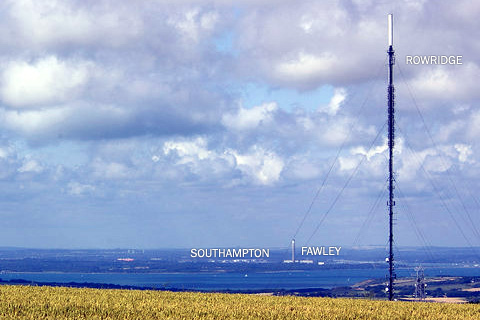
Although the coverage of the Fawley transmitter was not as widespread as that from Rowridge, in Southampton (the area of greatest economic interest) the Channel 5 analogue signal was good enough for most people to watch. Local TV channel Six TV also had a transmitter on the Fawley mast on channel 29 (also in-group) but with the slightly lower 4kW.
As with Six TV above, not all of the original analogue local TV stations used the main station masts.
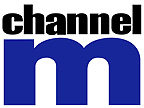 For example, Channel M in Manchester used a site on a water tower in Bolton. Like the Fawley solution for Southampton, this put the transmitter in roughly the right direction for viewers in Manchester whose antennas were pointed at the main station at Winter Hill. The frequency (channel 39) was, however, out of group and the transmitter pattern severely restricted to avoid interference with other transmitters and with the radioastronomy users at Jodrell Bank who used channel 38.
For example, Channel M in Manchester used a site on a water tower in Bolton. Like the Fawley solution for Southampton, this put the transmitter in roughly the right direction for viewers in Manchester whose antennas were pointed at the main station at Winter Hill. The frequency (channel 39) was, however, out of group and the transmitter pattern severely restricted to avoid interference with other transmitters and with the radioastronomy users at Jodrell Bank who used channel 38. 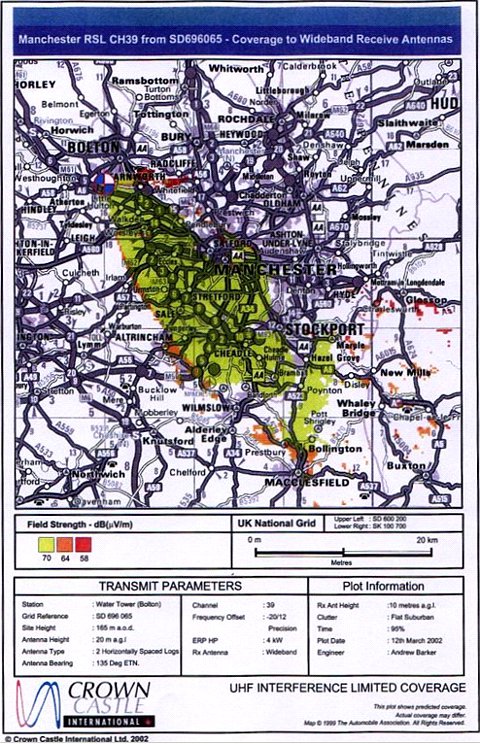 The upshot was that Channel M's signal was strong enough for good reception to a large number of viewers who were nearest to the water tower, but, conversely, coverage of Channel M in downtown Manchester was relatively poor (click on the map on the left to see it in full). Despite that, the station did better than many local TV companies and lasted for the best part of 12 years before finally closing down just before analogue services ended in the UK.
The upshot was that Channel M's signal was strong enough for good reception to a large number of viewers who were nearest to the water tower, but, conversely, coverage of Channel M in downtown Manchester was relatively poor (click on the map on the left to see it in full). Despite that, the station did better than many local TV companies and lasted for the best part of 12 years before finally closing down just before analogue services ended in the UK.What would have been great would to have been able to put more than one site on-air to provide additional coverage to fill-in coverage not-spots. In analogue terms this is difficult to do but for digital services such a solution is inherent to DTT in the form of a single frequency network (SFN). In an SFN multiple transmitters are put on the same frequency and as long as certain technical criteria are maintained (eg the distance between sites is small enough, ensuring that the transmitters are time and frequency synchronised, and that they carry the same content), they do not cause each other interference. In fact, the signals from multiple sites can even add together to improve coverage. If this sounds too good to be true, it is exactly how the digital audio broadcasting (DAB) multiplexes work.
So... Wouldn’t it be great if local TV in the digital age could take advantage of the use of SFNs to put a number of lower power (and thus much cheaper) transmitters right where their audiences are located, in line with existing masts (so that antennas don’t need re-pointing) and providing good coverage where the viewers are, but not wasting power or money on areas where few viewers are located? That is just the solution that Avanti’s bid to run the local TV multiplexes proposes. Whilst it might appear to be a ‘whacky, out-of-the-box’ type of solution, on the contrary it does what needs to be done in an efficient and effective way that has been proven to work well for local TV, even in the days of analogue transmission.
The jury (Ofcom) is still out on which of the bids to operate the multiplexes will succeed, but it is to be hoped that those making the decision are aware of the chequered history of local TV in the UK and don’t fall into the same traps that led to the commercial failure of the original analogue services in the 1990s and 2000s.
